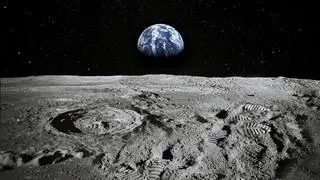Researchers are using cues gleaned from GPS tracking and NASA satellite data to predict when the zebras will be on the move, a powerful tool for the conservation of the animal.
One of the world’s longest migrations of zebras occurs in the African nation of Botswana, but predicting when and where zebras will move has not been possible until now.
Using NASA rain and vegetation data, researchers can track when and where arid lands begin to green, and for the first time anticipate if zebras will make the trek or, if the animals find poor conditions en route, understand why they will turn back.
Covering an area of approximately 22,000 square kilometres, Botswana’s Okavango Delta is one end of the second-longest zebra migration on Earth, a 580-kilometre round trip to the Makgadikgadi Salt Pans-the largest salt pan system on the planet.
Zebras walk an unmarked route that takes them to the next best place for grazing, while overhead thundering cloudbursts of late October rains drive new plant growth, filling pockmarks across this largest inland delta in the world.
In a matter of weeks, the flooded landscape could yield ecosystems flush with forage for the muscled movers.
Earth-orbiting satellites capture images of the zebras’ movements on this epic trek, as well as the daily change in environmental conditions.
Zebras do not need data to know when it’s time to find better forage: The surge of rain-coaxed grasses greening is their prompt to depart. But now, researchers are able to take that data and predict when the zebras will move.
While tracking animal movement with satellites has been accomplished many times, researchers combined that information with in-depth use of environmental satellite data, using a series of images of vegetation growth and rainfall taken over days and weeks.
This sheds unprecedented light on what drives animals to migrate, what cues they use, and how animal migrations respond to environmental changes, researchers said.
Pieter Beck, research associate with the Woods Hole Research Center in Falmouth, and three collaborators studied animal migration in a novel way, which they described in a paper published in the Journal of Geophysical Research.








Comments
Comments have to be in English, and in full sentences. They cannot be abusive or personal. Please abide by our community guidelines for posting your comments.
We have migrated to a new commenting platform. If you are already a registered user of TheHindu Businessline and logged in, you may continue to engage with our articles. If you do not have an account please register and login to post comments. Users can access their older comments by logging into their accounts on Vuukle.